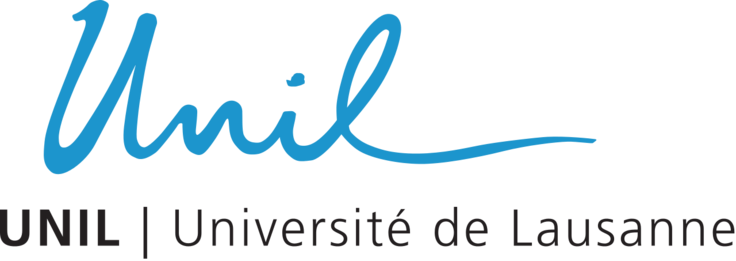Swiss Ai Research Overview Platform


Notre objectif est de développer CytoxPred, un nouvel outil basé sur un algorithme capable de prédire avec précision les lignées cellulaires cancéreuses ciblées par des petites molécules à visée therapeutiques. Capitalisant sur notre expérience dans la prédiction des cibles protéiques de petites molécules bioactives (i.e. SwissTargetPrediction.ch) nous espérons aussi prédire le mode d'action de cette cytotoxicité.
Résultant d’une collaboration entre le Département d’Oncologie Fondamentale de l’Université de Lausanne, l’Institut Ludwig de Recherche contre le Cancer – Branche de Lausanne, le SIB Institut Suisse de Bioinformatique et l’EPFL, ce projet s’inscrit dans la dynamique du Swiss Cancer Center Léman dont le but est de mettre au point des traitements innovants dans la lutte contre le cancer.
Nos résultats seront mondialement diffusés et mis en œuvre via notre collection d'outils Web de conception de médicaments (e.g. swissdock.ch, swisssimilarity.ch ou swissadme.ch) qui reçoit environ 250'000 visiteurs par an, effectuant près de 1.2 millions de calculs.
A rapidly growing amount of information regarding phenotypic cytotoxicity of small molecules is currently recorded in publicly available databases, such as ChEMBL. This information has reached a level of diversity, quality and extent that allows its exploitation by machine learning approaches to predict the cell lines that could be sensitive to given small molecules. Capitalizing on our experience in predicting protein targets of bioactive small molecules, our overall goal is to develop CytoxPred, a new machine learning model able to accurately predict the cancer cell lines targeted by small molecules. CytoxPred predictions will be generated by reverse screening based on the similarity principle, which hypothesizes that similar molecules are prone to be toxic for the same cell lines. CytoxPred will be built on a highly curated training set of cytotoxicity phenotypic data extracted from publicly available databases. The high quality of data is a key prerequisite for applying properly our own machine learning methodology in order to generate quantitative predictions of cytotoxicity profiles, from small molecule structure.Importantly and additionally, thanks to our expertise in protein target prediction, we are in a unique position to predict not only the cell lines sensitive to given compounds, but also the mode of action of this predicted cytotoxicity, in terms of possible protein binding. This could open the road to drug discovery and development strategies relying not only on existing experimental information but also on robust biological activity predictions. Here, we will focus on cancer-related compounds and cell lines, to benefit from the expertise of the applicant and research partners in oncology.We plan to meet these challenging objectives by addressing the following specific aims.In Aim 1, we will optimize the quality of the data collected from ChEMBL, regarding the target cell line of small molecules, by fine-tuning the selection criteria for data retrieval and by carefully curating the output by our own cancer biology expertise, as well as by crossing-checking with specialized third-party resources including the Cellosaurus, Register of Misidentified Cell Lines, or CanSAR.In Aim 2, we will build advanced models for CytoxPred by including 2D and 3D similarity between molecules along with other parameters to optimize the description of properties like physicochemistry, kinetics of cell penetration, and propensity to lead to aggregators or to promiscuous compounds.In Aim 3, we will investigate the feasibility and practicability of the strategy consisting in combining CytoxPred and SwissTargetPrediction, to predict not only cancer cell lines that could be sensitive to given compounds, but also to possibly decipher the mode of action of this cytotoxicity, if it can be explained by protein binding. In Aim 4, we will ultimately validate experimentally the predictions made in Aim 2 in selected cancer cell lines, by measuring cell viability and proliferation after in vitro treatment with selected compounds. Moreover, we will validate whether the protein targets predicted in Aim 3 are directly responsible for the observed cytotoxicity. Several experimental validation cycles will be executed to enhance the development pipeline of the in-silico prediction models and to optimize their performance. When possible, for a small number of cases, organoid culture will be setup and final experimental validation will be conducted in transgenic and Patient Derived Xenograft.The feasibility of the project is endorsed by (i) the long-term experience of the applicant in the fields of cheminformatics, computer-aided drug design, ligand-protein interaction, molecular fingerprints and computational science, and by the considerable in-house computational power as well as (ii) the existing collaboration with Elisa Oricchio’s group whose expertise in cancer genetic and pre-clinical studies using in vitro and in vivo models is expected to have a critical impact on the relevance of the data employed and on the quality of the experimental validation.The new CytoxPred application will complement the widely used portfolio of computer-aided drug design tools developed by the applicant and provided to the scientific community through freely accessible web sites.
Last updated:07.05.2022